The A to Z of training jargon - our guide to understanding the fitness terms that matter
Don’t know your LT1 from your LT2, your W/kg from your W’? Here’s our a no-nonsense glossary to get you up to speed with all the terminology you’ll need

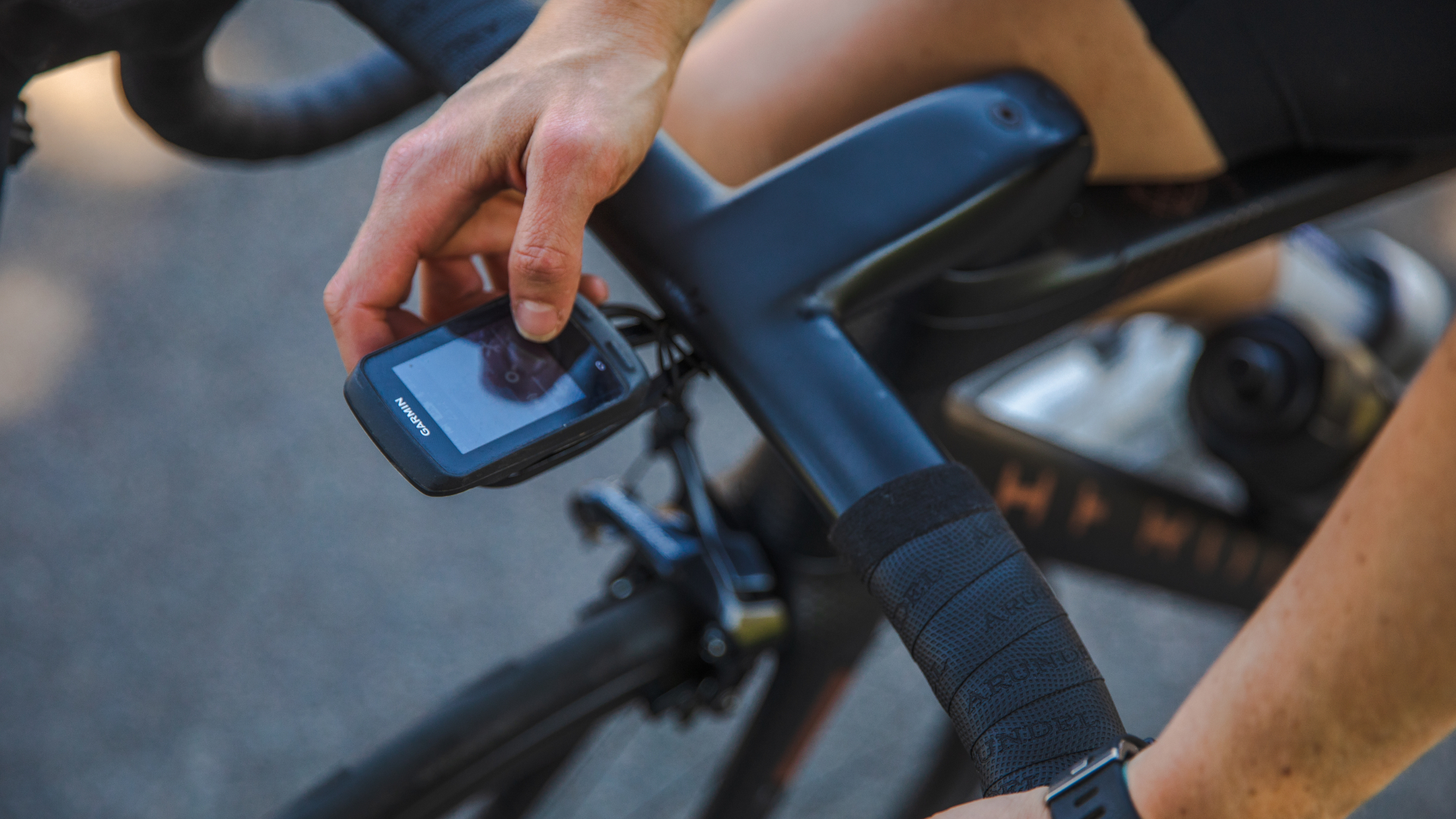
- Aerobic
- Anaerobic
- Average power
- Bonk
- BPM
- Cadence
- CDA
- Critical power
- Efficiency factor
- Excess Post-Exercise Oxygen Consumption (EPOC)
- Functional Threshold Power (FTP)
- Functional Overreaching
- Lactate Threshold (LT)
- Leg openers
- Half-wheeling
- Heart rate reserve (HRR)
- Heart rate variability (HRV)
- Kilojoule (KJ)
- Non-functional overreaching
- Normalised power
- Over-unders
- Periodisation
- Power balance
- Power to weight ratio
- RED-S
- Resting HR
- Reverse periodisation
- Rate of perceived exertion (RPE)
- Sweetspot
- Tempo
- Training low
- Training stress score
- VAM
- Variability index
- VLamax
- VO2 Max
- Watts
- Watts Prime (W')
- Zones
Lots of technical terms are batted around on bike rides and on cycling training platforms, here are the fitness ones it’s worth knowing about…
Aerobic
Definition: Effort relying principally on energy generated by the body’s aerobic (with oxygen) system.
Usage example: “I’m going to build my aerobic base this winter.”
How useful it is: The majority of your cycling will take place in the aerobic ‘zones’ (more on training zones later). Improving your body’s ability to generate energy using oxygen will leave you with a rocksolid aerobic base, and is just as key for a club rider as it is for a rider in the professional peloton.
Anaerobic
Definition: High-intensity effort relying principally on energy generated by the breakdown of glucose anaerobically (without oxygen).
Usage example: “Those anaerobic intervals killed me.”
How useful it is: The yin to aerobic’s yang, this energy system is used for those short, sharp efforts of less than a minute – either when sprinting for the line or trying to not get dropped from the break. Improving your anaerobic capacity (the amount of work you can sustain above your lactate threshold) with high-intensity interval training boosts your lactate tolerance and drags your aerobic base up with it too.
The latest race content, interviews, features, reviews and expert buying guides, direct to your inbox!
Average power
Definition: Literally the average watts from your entire ride.
Usage example: “How do Tour de France riders average 300 watts for four hours straight?!”
How useful it is: Unlike normalised power, average power includes any time spent coasting, so it doesn’t always accurately show how hard you rode.
Bonk
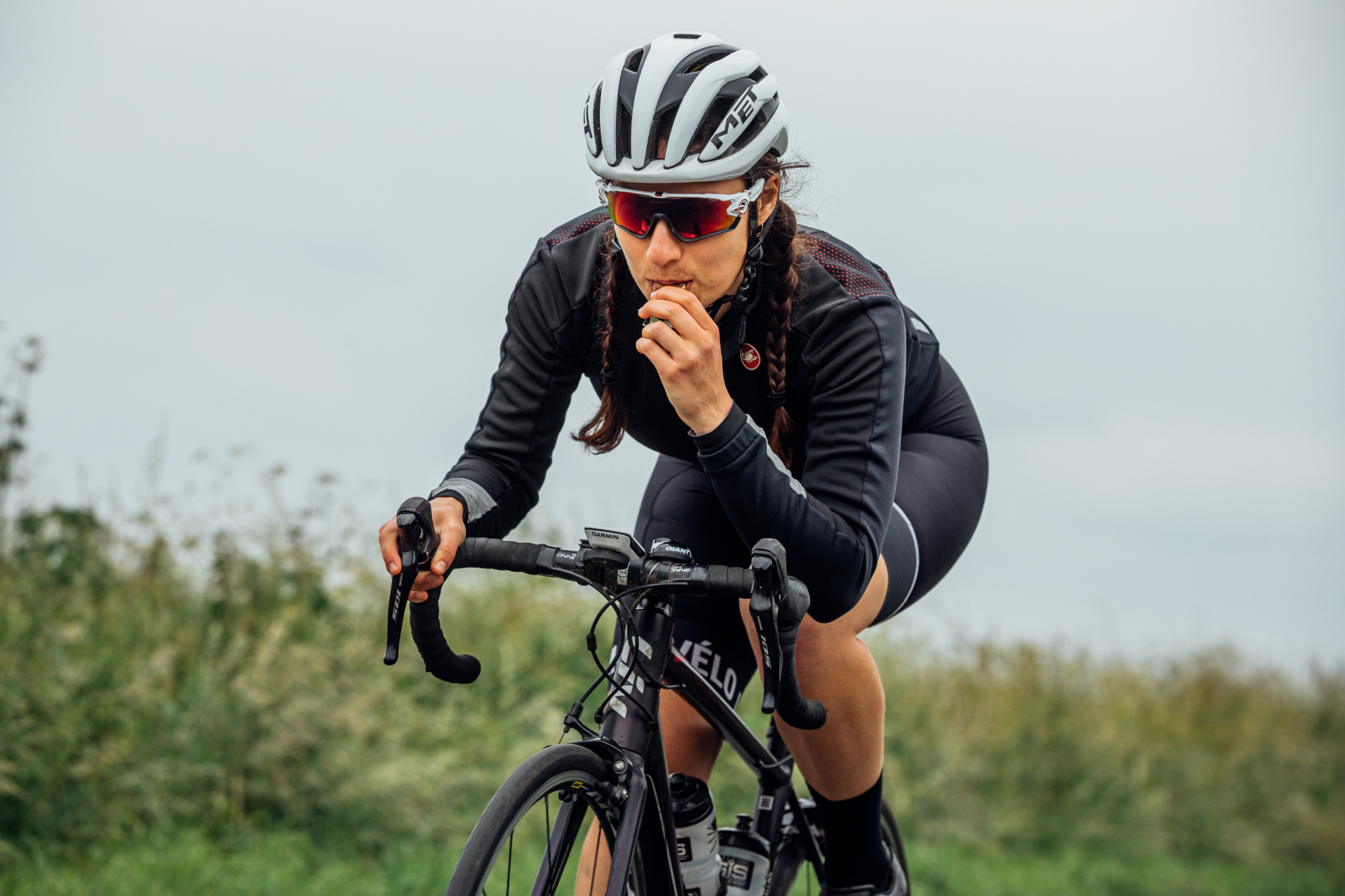
Definition: No sniggering at the back. This informal term describes the feeling of being past your limit and unable to go on. It’s backed up scientifically too, with most research suggesting it’s the moment you run out of glycogen stores, when the body is forced to convert other, less efficient sources (fat, protein) into energy
Usage example: “I bonked hard on my first 100-mile ride.”
How useful it is: Bonking is a sign that you haven’t taken your nutrition for cycling seriously enough. A rule of thumb is to carb-load before a big ride with eight to 10g carbs per kilo of bodyweight per day up to 48 hours before a demanding ride of longer than 75 minutes, and consume 30-90g of carbohydrates per hour during the ride. Your chances of bonking if you wait for the cafe stop to fuel your long ride are very high.
BPM
Definition: Either the beats per minute of your heart or the rate you’re inhaling and exhaling – breaths per minute.
Usage example: “What is your resting heart rate BPM?”
How useful it is: Using a heart rate monitor for cycling, knowing your heart rate and its reaction to efforts is a great way of developing an understanding of your overall fitness – lower BPMs for a similar input suggest your body is adapting well to training. When it comes to breathing, a lower number points to a deeper intake of oxygen than short, frequent panting. While knowing your breaths per minute isn’t going to transform your riding, addressing a breathing problem might.
Cadence

Definition: The number of pedal strokes you perform each minute, displayed as revolutions per minute (RPM).
Usage example: “Improving your cadence can improve your pedal stroke efficiency.”
How useful it is: You’re likely to settle into a cycling cadence that comes naturally but it’s important to get out of your comfort zone sometimes. Training yourself to ride at a variety of RPMs can mean you’re prepared when you’ve run out of gears while slogging it out on a climb or maxing out in a sprint. For general riding, 80-100rpm is the normal range.
CDA
Definition: The coefficient of aerodynamic drag, i.e. how aerodynamically efficient you are. It’s based on an equation that takes into consideration factors such as the combined frontal area of the rider and bike, speed, power and drivetrain efficiency, and the aim is to get as close to 0 as possible.
Usage example: “Reducing your CdA is a simple, low-effort marginal gain.”
How useful it is: Not to be confused with ‘CBA’ (that feeling you get when you look outside just as it’s started to rain), CdA measures how aero you and your bike are. You don’t need to fork out for a fresh bike fit to optimise and adopt the UCI-banned aero tuck, though. There are limits to what the average club rider can achieve while remaining comfortable and able to generate power. Holding the most aero position places huge, highly specific demands on your body - maximising speed, therefore, requires a balancing act between power and aerodynamics.
Even so, reassessing your position to reduce your frontal profile could generate extra watts for free – win-win. In fact, by shaving just 0.05 off of your CdA, a person with a combined rider and bike weight of 80kg could hold 32kph for 22 fewer watts. Find out more on how to save watts for less here.
Critical power
Definition: The maximum power you can theoretically sustain indefinitely (in practice, it tends to be a rider’s 30-40-minute power).
Usage example: “According to my Critical Power, I could ride at 200 watts forever.”
How useful it is: Championed as an alternative to FTP, CP is quicker and easier to test, and it can give you a more in-depth understanding of your aerobic and anaerobic capacities. That said, the majority of the best indoor training apps for cycling (Zwift, etc) are based around FTP, so it’s not always easy to integrate.
Efficiency factor

Definition: The number of watts you can produce per heartbeat.
Usage example: “My EF improved after my winter training block.”
How useful it is: Software such as Training Peaks or TrainerRoad will automatically work out your EF for you, but you can calculate it yourself by dividing your Normalised Power by your Average Heart Rate. When trending higher, it shows improved aerobic fitness – you’re able to churn out the same power for less input (heartbeats). Also, if it plateaus, you may need to reassess your training.
Excess Post-Exercise Oxygen Consumption (EPOC)
Definition: Also referred to as ‘the afterburn effect’, this is the amount of oxygen required by your body in the hours after exercise to recover to its pre-training state.
Usage example: “A hard session can create an EPOC of 75ml/kg.”
How useful it is: Although it’s an indepth way of showing the intensity load of a training session and can show your physiological fatigue, it requires a lab-based test for a true reading.
Functional Threshold Power (FTP)
Definition: Functional threshold power is the highest average power you can theoretically sustain for 60 minutes; 95% of your best 20-minute effort.
Usage example: “Improving your FTP will make you a faster cyclist.”
How useful it is: FTP has become the cornerstone of power-based cycling training plans for beginners, intermediates and racers alike, and for good reason. Relatively simple to test on a turbo trainer or in the field, FTP provides a benchmark against which to set your training zones. While there are more accurate methods (Critical Power), few are as ubiquitous or as simple to test.
Functional Overreaching
Definition: A training technique involving a short period of extreme overtraining followed by a brief recovery window that can boost performance.
Usage example: “A short block of functional overreaching should lead to a supercompensation.”
How useful it is: A specialist tool reserved for those who are plateauing (stuck in a training rut and looking how to start improving again) and have left no stone unturned. When attempting a functional overreaching block, most fall foul of not training hard enough.
Lactate Threshold (LT)

Definition: There are two lactate thresholds: the first is the point at which your body’s lactate production rises above its resting level (LT1); the second (LT2) is where it’s unable to clear and use lactate quick enough to prevent it from accumulating rapidly.
Usage example: “Your lactate thresholds can provide more detailed training zones than relying on percentages of your FTP.”
How useful it is: Knowing your lactate thresholds and their corresponding watts or heart rate can help you set up training zones based on the concentration and accumulation of blood lactate and your body’s ability to clear it. LT2 corresponds to Critical Power, and anything above it an anaerobic effort. Finding your lactate thresholds requires a trip to the lab, however. Most exercise scientists these days agree that the sensation of burning in the legs when pushing hard is not caused by the build-up of lactate, putting an end to that decades-old myth.
Leg openers
Definition: A short, sharp training session the day before an event that breaks your legs out of their tapering trance.
Usage example: “An hour of leg-openers can make a big difference come race day.”
How useful it is: Used by amateurs and pros alike, this drill can help get you prepared physiologically and psychologically for the following day.
Half-wheeling
Definition: Riding half a wheel ahead of the rider next to you, rather than directly alongside.
Usage example: “Hey, rider at the front, stop half-wheeling!”
How useful it is: Although it might not seem like a ‘big deal’, if you’re constantly riding slightly ahead of the person next to you, the pace of the group ride is only going one way – up. It can also cause wheels in the following group to overlap, which becomes dangerous when swerving to avoid obstacles (potholes etc) on the road. Stay inline and keep the rest of the peloton onside. Find more tips on how to cycle in a group here.
Heart rate reserve (HRR)
Definition: Your maximum heart rate (MHR) minus your resting heart rate (RHR).
Usage example: “My HRR leaves me with 120 beats to play with.”
How useful it is: If you’ve only got access to a heart rate monitor, a common way to calculate training zones is to base them on a percentage of your MHR. But you can create much more accurate zones by using percentages of your HRR and adding it to your RHR. For example, for someone with a RHR of 60 and MHR of 180, their aerobic endurance zone (70%- 80%) would actually be 144-156bpm using HRR rather than 126-144bpm (thereby potentially undertraining) if solely relying on MHR.
Heart rate variability (HRV)
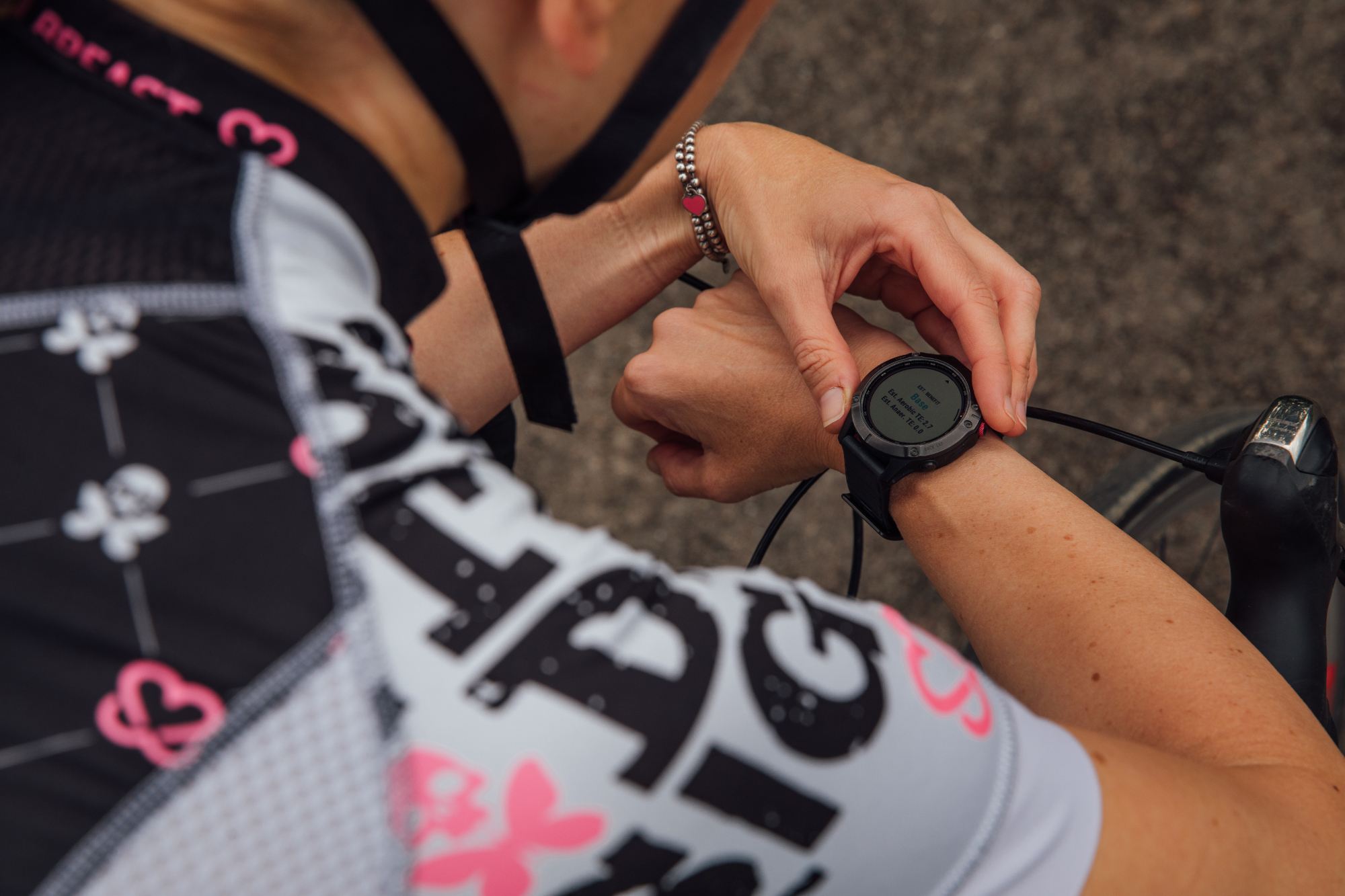
Definition: The variation in time between each heartbeat.
Usage example: “A bad night’s sleep has caused my HRV to plummet.”
How useful it is: Heart rate variability is touted as being able to show how rested and recovered you are: the greater the variability, the better. The most accurate measurement comes from an ECG, but wearable devices like the best smartwatches for cycling and Whoop, and smartphone apps can provide you with a reading. It’s best to go off long-term collection of data rather than one reading: if trending upwards, your body is adapting well to training; if going down, it might be a sign you’re getting ill. More research is needed before it can be considered a gold-standard metric.
Kilojoule (KJ)
Definition: A measurement of expended energy, calculated thus: average watts times seconds riding divided by 1,000.
Usage example: “A big session is a great excuse for some essential post-ride kilojoules.”
How useful it is: More relevant to cycling than calories because directly relatable to watts burnt, cyclists often regard kJ as more meaningful than kcal. Also, you get more for your money – there are 4.184kJ to every one kilocalorie (kcal).
Non-functional overreaching
Definition: The early stages of overtraining where you aren’t recovering effectively and enough between sessions and it leads to a decrease in performance.
Usage example: “Riding at high intensity all the time can tip you into nonfunctional overreaching.”
How useful it is: The opposite of functional overreaching, it’s a sign that you’re overcooking it and it might be an idea to pull back and recuperate before you fall into the chronic state of overtraining, which can take months to recover from.
Normalised power
Definition: An alternative to average power that takes a 30-second rolling average from a ride and places a higher emphasis on higher power outputs.
Usage example: “My NP was 20 watts higher than my AP.”
How useful it is: During steady efforts your average power and normalised power are likely to be the same, but on a hilly ride, your average is going to be skewed down by coasting on descents, even if you were going into the red as you raced to the summit. NP is useful in these settings, capturing the intensity of the ride and suggesting how much recovery you need and how many rest days you should take.
Over-unders
Definition: A technique where you perform intervals alternating between slightly above and below your anaerobic threshold.
Usage example: “A weekly cycling session of over-unders can improve your lactate threshold.”
How useful it is: Intervals at this intensity can boost your body’s ability to tolerate and use the lactate produced during anaerobic efforts, increasing how long you can sustain hard efforts.
Periodisation
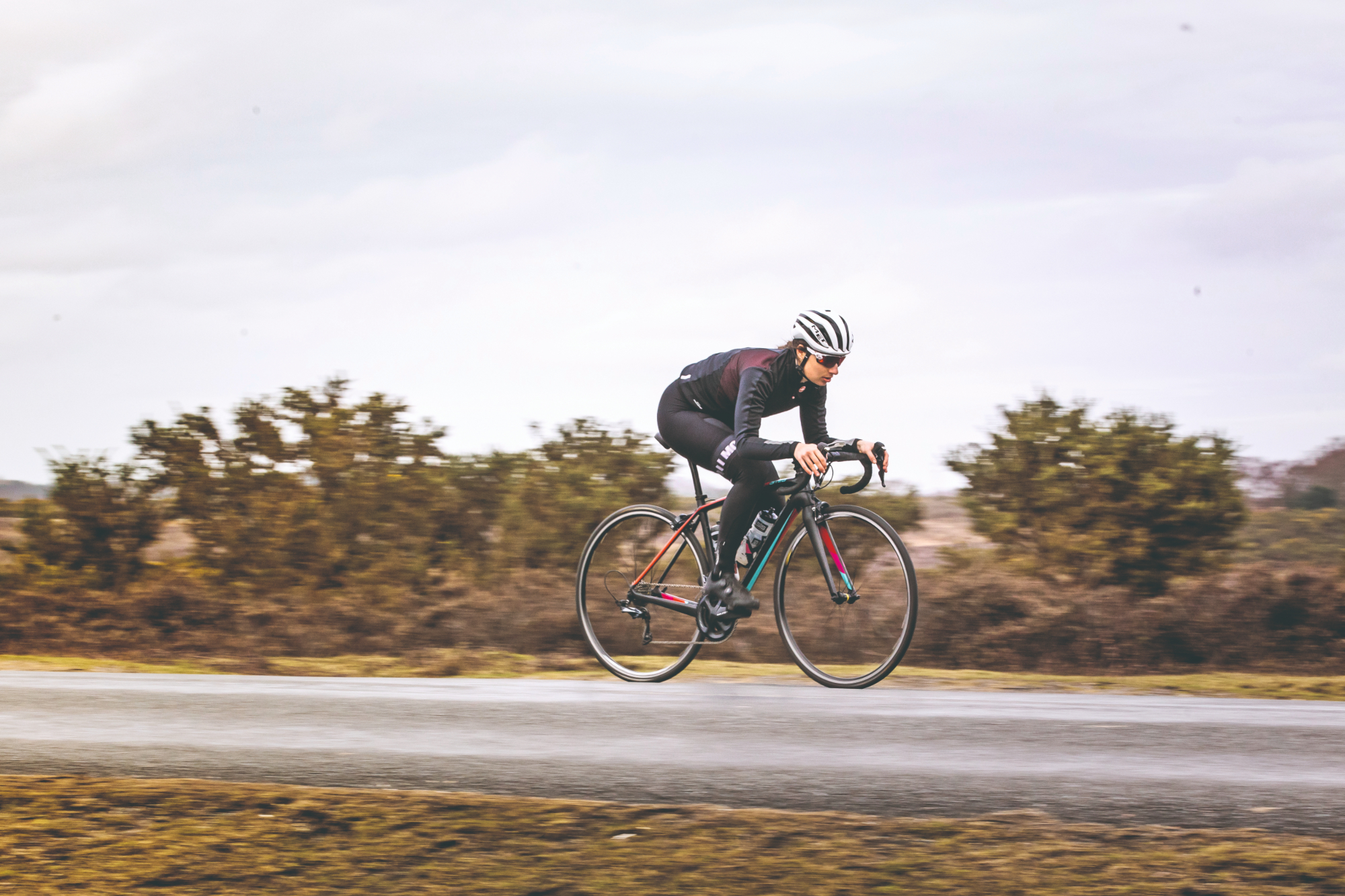
Definition: There are two types of periodisation. In the short term, it is where you build a training block of around two to three weeks by gradually increasing intensity and volume before having a lighter week for recovery. In the long term, it’s a training plan that involves blocks of gradually increasing training stress – starting with building your aerobic base in winter all the way up to anaerobic efforts during race season.
Usage example: “Periodisation is commonly favoured by the pro peloton.”
How useful it is: The short-term version is an approach that most training plans are built around. The latter is a traditional method of structuring the year.
Power balance
Definition: The symmetry (or lack thereof) between each leg’s power output while pedalling.
Usage example: “If your power balance is 55/45, it might be time to do some investigating.”
How useful it is: Discovering that your power balance is a long way off 50/50 (symmetrical) suggests that there might be an underlying issue with your bike fit, pedalling efficiency or that you’re anatomically asymmetrical (for example, you might have one leg slightly longer than the other) - the best power meters for cycling can show you if this is the case. There’s no proven performance benefit from having a perfect power balance, but rectifying it could help prevent common cycling injuries due to poor form.
Power to weight ratio
Definition: Your output in watts divided by your weight in kilos (W/kg).
Usage example: “A WorldTour sprinter’s power-to-weight ratio can be as high as 24W/kg for five-second efforts.”
How useful it is: An important metric when hills are added into the equation, and useful to focus on to improve your climbing. If two riders are producing the same amount of power but one weighs 10kg less, the one who weighs less will get to the top faster. Improving your W/kg can be more beneficial than raising your FTP.
RED-S
Definition: Relative energy deficiency in sport is a syndrome that leads to a decline in performance due to maintaining a sustained calorie deficit.
Usage example: “Frequent niggles and a loss of sex drive could be symptoms of RED-S.”
How useful it is: Left untreated, RED-S can be very serious, so be aware of the warning signs. The best way to ensure you’re not at risk is to fuel properly before, during and after every ride.
Resting HR
Definition: How many times the heart beats per minute while you’re resting.
Usage example: “Miguel Indurain was rumoured to have a resting heart rate of just 28bpm.”
How useful it is: Your resting heart rate can be a good indicator of your fitness. Once you get to know your general ballpark figure, a significant increase can indicate that you’re fatigued or ill, while its reversion to your average shows you’re recovered.
Reverse periodisation
Definition: The opposite of periodisation, the training structure starts with top-end efforts before reducing in intensity as you progress through the plan.
Usage example: “Reverse periodisation is great if you don’t enjoy long winter miles outside or on the turbo.”
How useful it is: Ideal if you’re timepoor and want to spend your winter indoors completing hard efforts on a turbo and summer outside getting in long, lower-intensity rides. Depending on your training background, it may be as effective as the traditional model.
Rate of perceived exertion (RPE)
Definition: How hard an effort or ride felt out of 10
Usage example: “A VO2 max session should feel close to a 9/10.”
How useful it is: Although rudimentary compared to power or heart rate metrics, your RPE can highlight things that might be missed in the data – for example, a session might have felt harder than your numbers suggested, pointing to an issue that might be worth exploring further.
Sweetspot
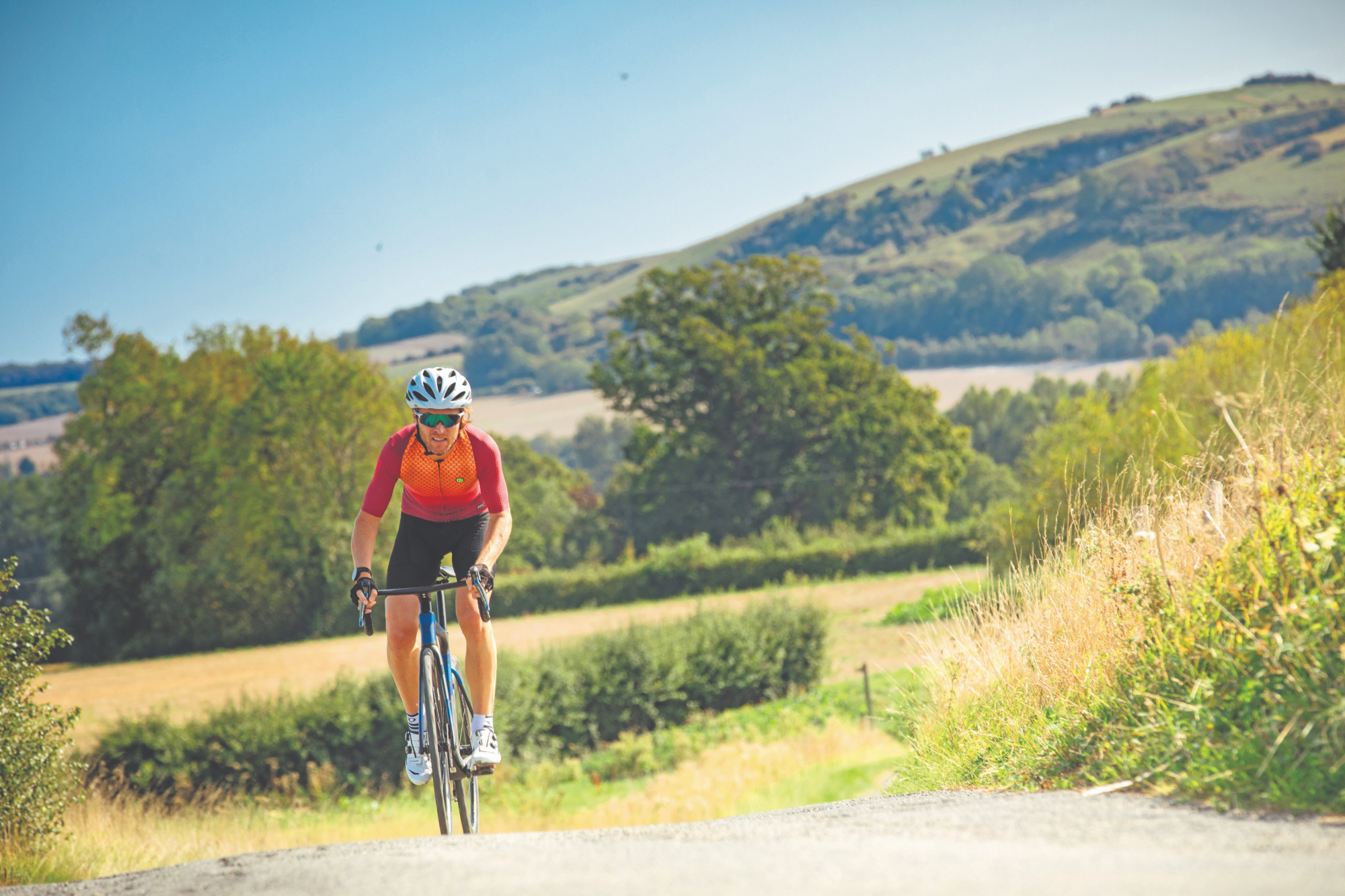
Definition: A riding intensity that sits between Zone 3 and Zone 4.
Usage example: “Sweetspot training zone sessions see you completing efforts at 88-94% of your FTP.”
How useful it is: A pillar of any training plan, sweetspot intervals allow you to accumulate a lot of high-intensity work without tipping into or above your FTP, meaning that efforts can be sustained for longer and achieve the same adaptations as a long, aerobic ride in a shorter amount of time.
Tempo
Definition: Often referred to as Zone 3, it’s a step up from endurance riding and you should be able to hold the effort for 20-60 minutes.
Usage example: “Adding 10-30 minutes of Zone 3 riding into longer rides is a great way to build your aerobic base.”
How useful it is: Tempo is important to work on if you want to be able to perform sustained harder efforts – either in time trials or on longer climbs.
Training low
Definition: Reducing your intake of carbohydrates pre-ride to force your body to use fats as fuel.
Usage example: “Riding fasted by skipping breakfast is a simple way of training low.”
How useful it is: A nutritional training method favoured by pros, the logic is that it improves the body’s ability to metabolise its almost boundless stores of fat rather than relying on its limited supply of carbohydrates. In practice, you run the risk of bonking if you take it too far.
Training stress score
Definition: A ranking of a ride’s intensity, training load and physiological stress. Riding at your FTP for an hour would provide a score of 100, which acts as a useful benchmark.
Usage example: “A high-intensity interval session could tip your HSS over 100.”
How useful it is: If training with power and using an app like TrainerRoad or Training Peaks, your TSS will be used to work out all other metrics such as TSB and CTL. It’s not exactly something you’d compare with mates down the pub, though!
VAM

Definition: An Italian initialism that stands for velocità ascensionale media, it roughly translates to the average vertical ascent in metres per hour.
Usage example: “An elite cyclist’s VAM might be as high as 1,500mph.”
How useful it is: Originally designed to measure climbing credentials, it shows how many metres you are able to climb vertically per hour. In practice, it’s a good way of comparing efforts on different climbs (the higher the VAM, the harder you rode), while it can also be used to track improvements on a specific hill.
Variability index
Definition: Normalised power divided by average power.
Usage example: “For time trials you want a VI as close as possible to one.”
How useful it is: An important metric for time triallists on flat courses (where the focus is all about steady-state pacing without surges), it’s less important for general riding.
VLamax
Definition: The maximum production rate of lactate in muscles.
Usage example: “A high VLamax is ideal for sprinters, but will lead to a longer recovery time between efforts.”
How useful it is: A measure of your anaerobic energy system’s performance, in the lab it’s measured by taking your blood lactate before and after a short, all-out effort, subtracting the pre-test reading from the post and dividing by the duration of the test effort to get your VLamax. Definitely more a ‘nice to have’ than a necessity.
VO2 Max
Definition: Your relative VO2 max is the maximum rate of oxygen your body can use (measured in millilitres per kilo of bodyweight per minute) to generate energy aerobically. Absolute VO2 max is the volume of oxygen without taking weight into account.
Usage example: “Tadej Pogačar’s relative VO2 max is reported to be almost 90ml/ min/kg.”
How useful it is: The higher your VO2 max, the more oxygen your body is able to use at its aerobic limit. While there is a genetic ceiling set by the size of your heart and lungs, it’s possible to improve your aerobic capacity by training at and above FTP.
Watts
Definition: The measurement of power output where one watt is equal to one joule (1/1,000th of a kJ). Calculated by a power meter every second, it’s the basis of power-based training.
Usage example: “Around five watts per kilo is a very respectable FTP.”
How useful it is: The power equivalent of speed’s kph or heart rate’s bpm, it’s impossible to imagine cycling without it.
Watts Prime (W')
Definition: The finite capacity you have to perform at above your Critical Power.
Usage example: “Your Watts Prime is effectively your anaerobic battery – it can be recharged mid-ride but the harder your effort, the quicker you’ll burn through it.”
How useful it is: Knowing your Watts Prime can help you determine how long you should be able to sustain hard efforts above your threshold. This could prove especially useful information for cyclocross and crit racers.
Zones
Definition: Bands of intensity determined by power, heart rate, lactate threshold or RPE to govern intensity, from Zone 1 (active recovery) up to Zone 6 (anaerobic sprinting).
Usage example: “Most FTP training plans are based around six zones.”
How useful it is: Without zones, we’d be left juggling percentages of thresholds while tackling a training session – not ideal when you’ve already got enough to focus on.

Charlie Allenby is a freelance journalist specialising in cycling, running and fitness. He has written for publications including the Guardian, the Independent, T3, Bike Radar, Runner’s World, Time Out London and Conde Nast Traveller, and cut his teeth as staff writer for Road Cycling UK (RIP). He is also the author of Bike London: A Guide to Cycling in the City. When not chained to his desk, Charlie can be found exploring the lanes and bridlepaths of Hertfordshire and Essex aboard his pink and purple Genesis Fugio.